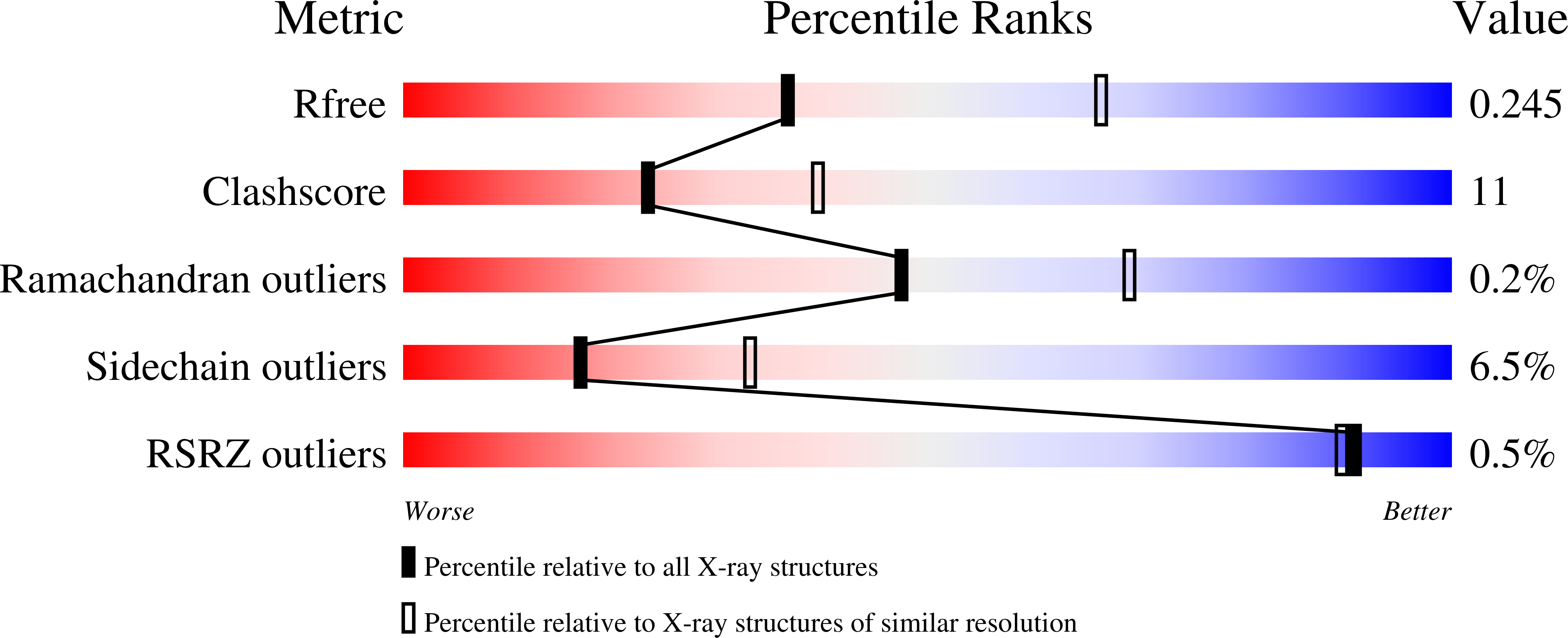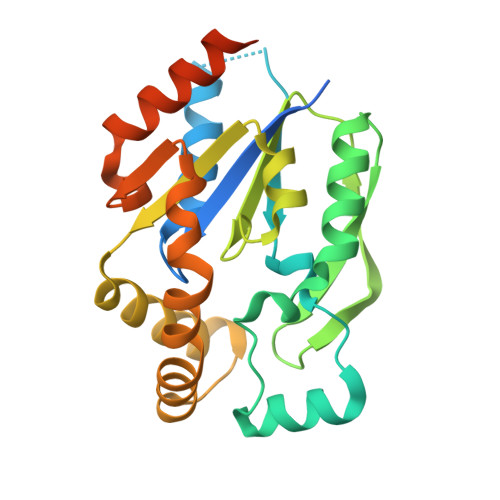Structural basis for the specificity, catalysis, and regulation of human uridine-cytidine kinase
Suzuki, N.N., Koizumi, K., Fukushima, M., Matsuda, A., Inagaki, F.(2004) Structure 12: 751-764
- PubMed: 15130468
- DOI: https://doi.org/10.1016/j.str.2004.02.038
- Primary Citation of Related Structures:
1UDW, 1UEI, 1UEJ, 1UFQ, 1UJ2 - PubMed Abstract:
Uridine-cytidine kinase (UCK) catalyzes the phosphorylation of uridine and cytidine and activates pharmacological ribonucleoside analogs. Here we present the crystal structures of human UCK alone and in complexes with a substrate, cytidine, a feedback inhibitor, CTP or UTP, and with phosphorylation products, CMP and ADP, respectively. Free UCK takes an alpha/beta mononucleotide binding fold and exists as a homotetramer with 222 symmetry. Upon inhibitor binding, one loop region was loosened, causing the UCK tetramer to be distorted. Upon cytidine binding, a large induced fit was observed at the uridine/cytidine binding site, which endows UCK with a strict specificity for pyrimidine ribonucleosides. The first UCK structure provided the structural basis for the specificity, catalysis, and regulation of human uridine-cytidine kinase, which give clues for the design of novel antitumor and antiviral ribonucleoside analogs that inhibit RNA synthesis.
Organizational Affiliation:
Department of Structural Biology, Graduate School of Pharmaceutical Sciences, Hokkaido University, N12 W6 Kita-ku, Sapporo 060-0812, Japan.





















